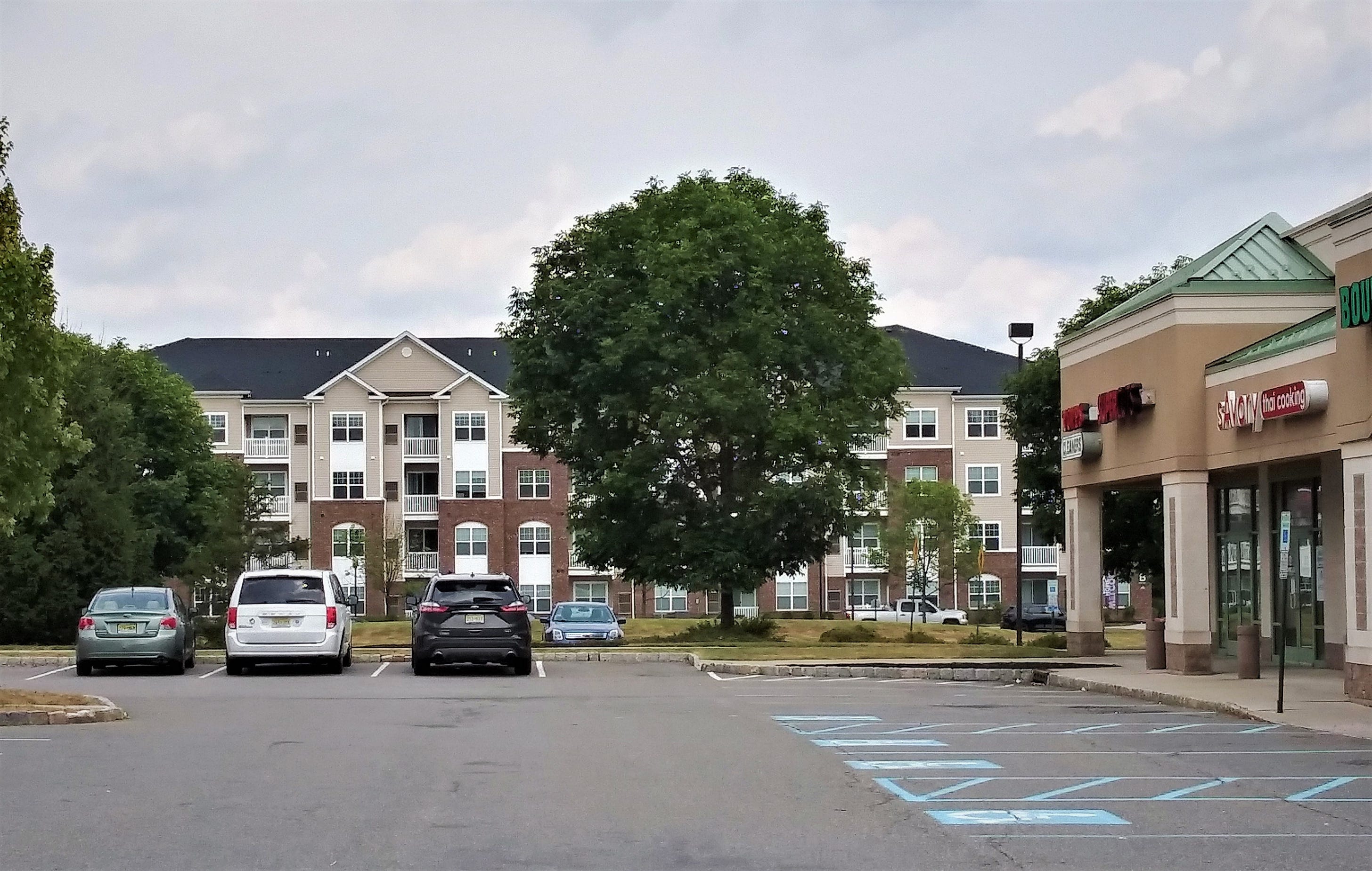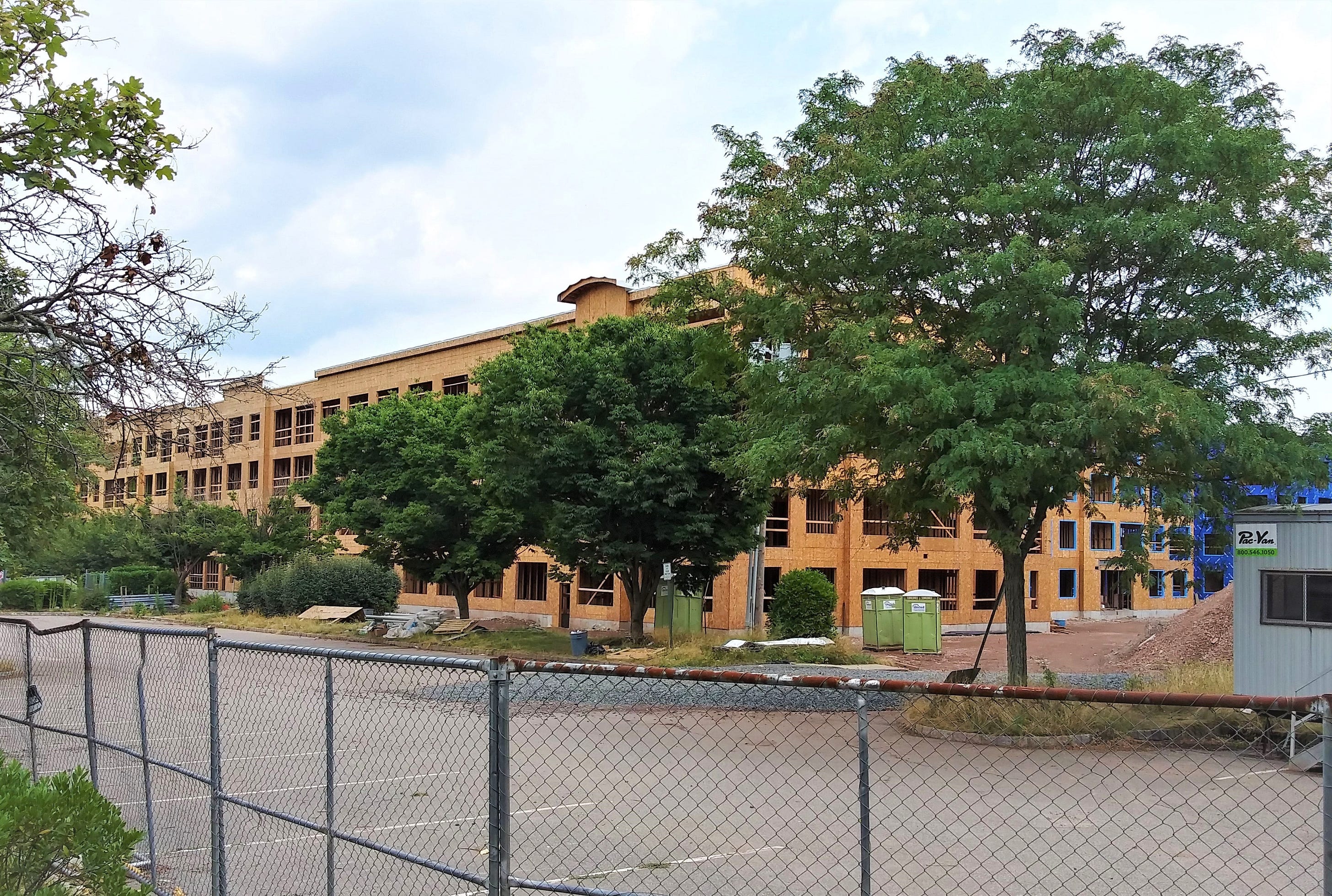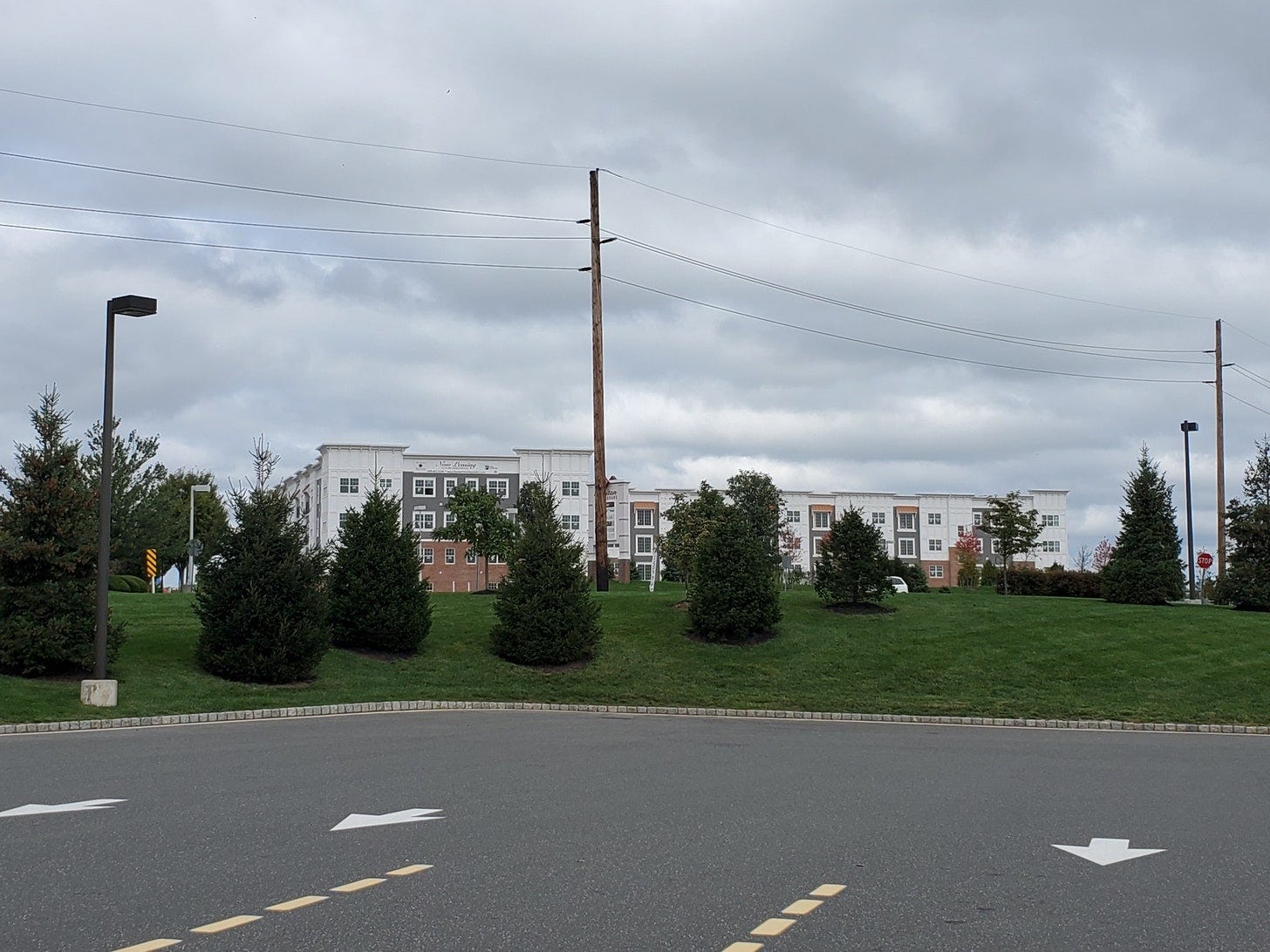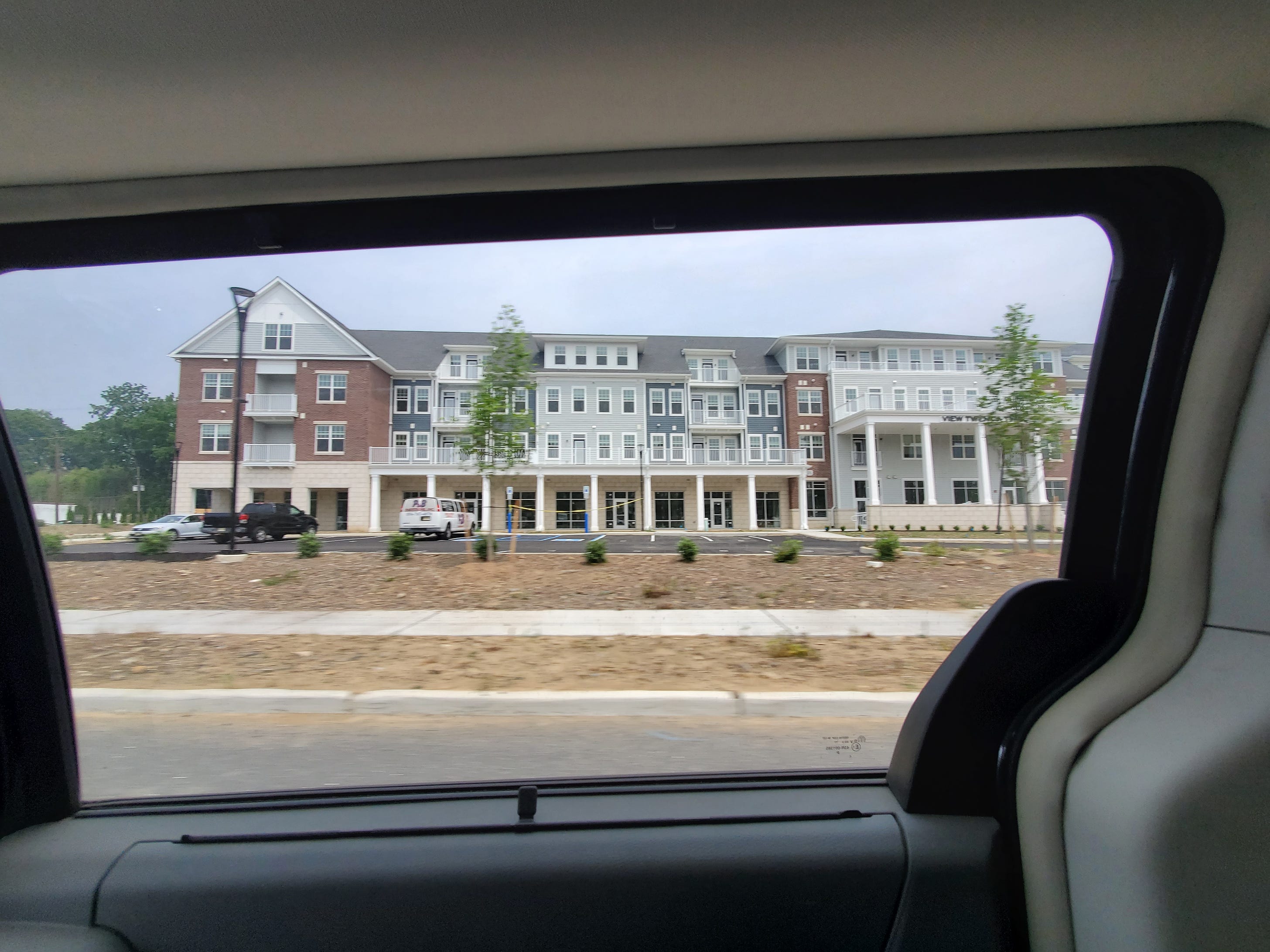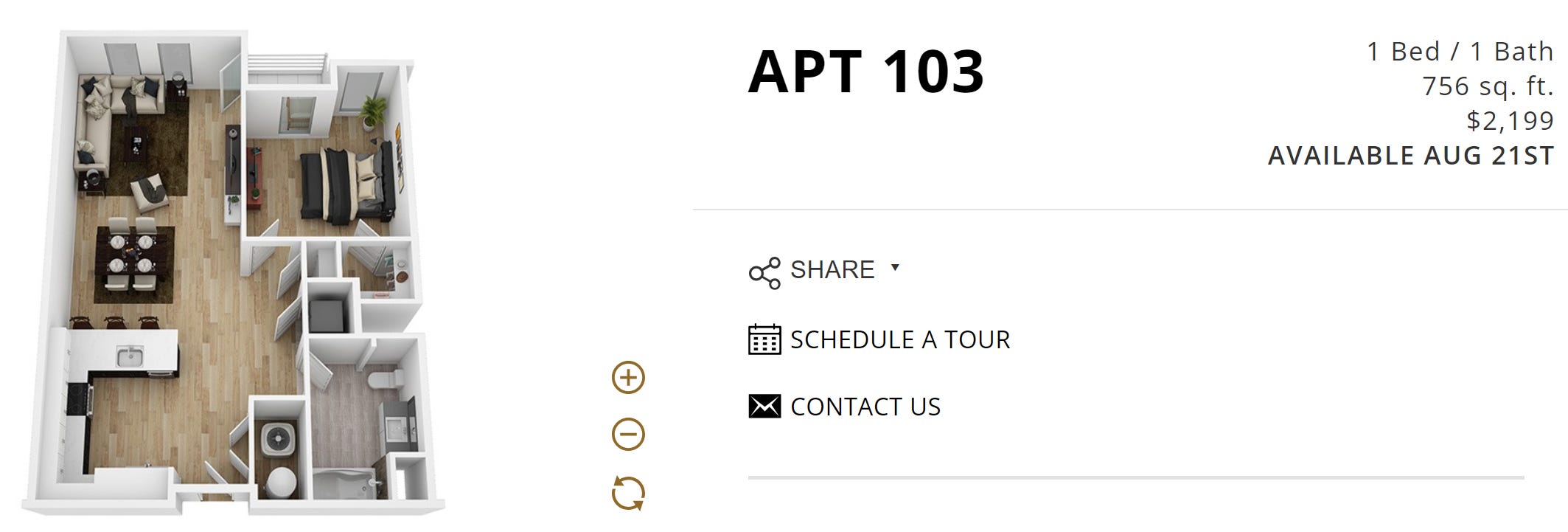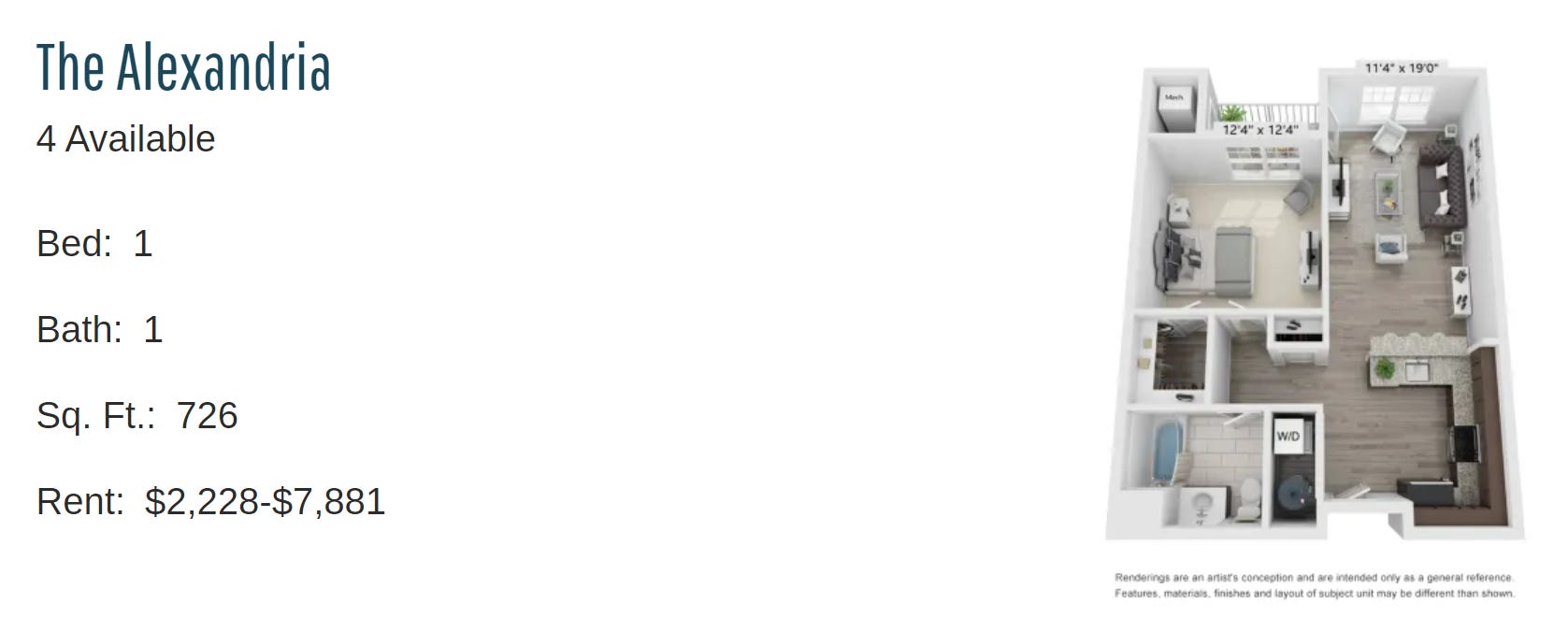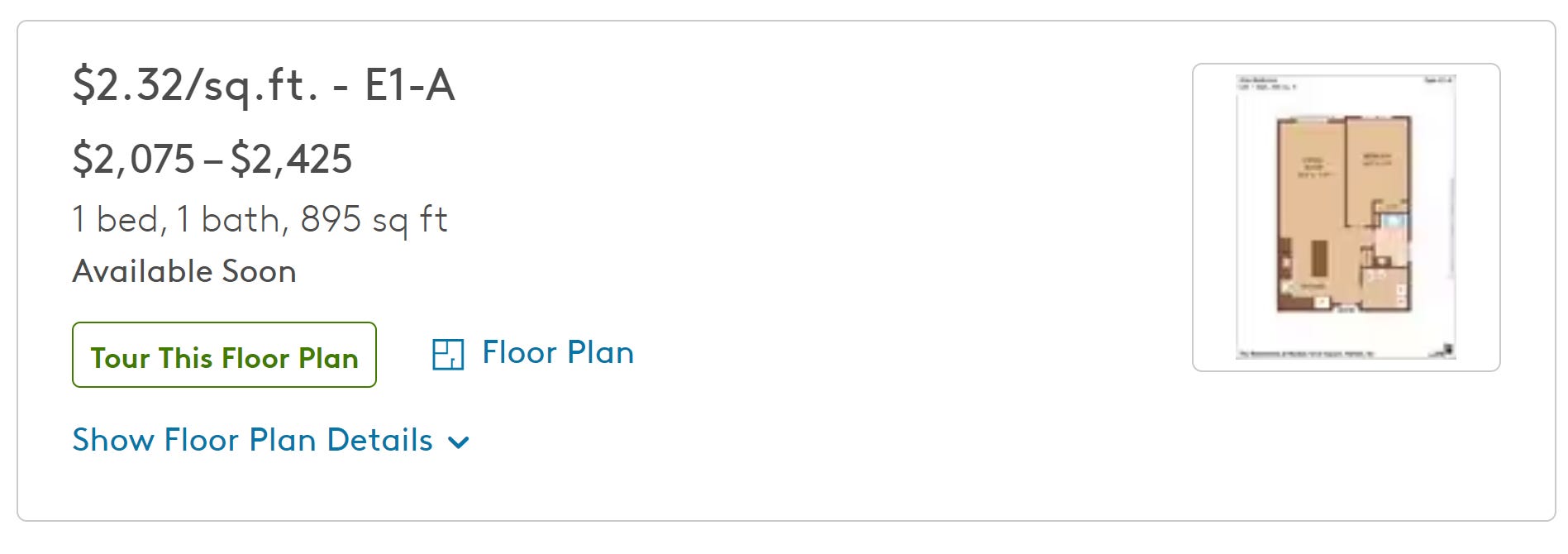The Deleted Scenes - High Five-Over-One
Whenever I go back to New Jersey, I notice and talk about these types of buildings: We have them all over Northern Virginia too. And I just recently wrote about one of them, here. So what are these? They’re called “5-over-1s,” which I used to think meant “five floors of residential over one floor of commercial,” but which really refers to the numbering of materials in the building code. The 5 refers to wood (and is typically three to five stories) and the 1 refers to masonry, which is the ground level. Building codes typically demand all-masonry construction for taller structures, which is very expensive. Permitting multistory apartment buildings to be made of wood (sometimes with purely decorative brick cladding) was a technocratic reform which sparked a lot of housing development. Here’s a history and analysis of these buildings. (And actually, it looks like at least a couple of these are all wood without a masonry base.) But that’s what they are technically. Economically, they’re just sort of the form multifamily development takes today, for a variety of reasons. That’s why in growing areas you see them and in older places without much new development you generally don’t—because they didn’t really exist back then. When growth happens, it usually takes the most common form. In Somerville, New Jersey, there was an old, solid-looking brick building—which turned out to be framed with rotting wood. Many of the downtown-style structures in these old towns are quite simple and cheap, the 5-over-1s of their day. Culturally, these buildings are also something. I have so many discussions about them with folks in central New Jersey and elsewhere about the various aspects of development: aesthetics, traffic, concerns about crime, “crowding,” what have you. But I get the sense that a lot of folks don’t really understand why these buildings are getting built. I’ve been asked, genuinely or rhetorically many times: Who’s living in these buildings? Who wants to live in them? The disbelief that they are filling any real market niche fuels the idea that they’re part of some “plan”: diminishing homeownership, “bringing in” low-income people, whatever. So I want to pop the hood a little bit. Here are a few floorplans and prices from central Jersey apartment buildings of the sort in the photos above. A 756-square-foot, one-bedroom for $2,199 a month: Another one-bedroom at 726 square feet, starting at $2,228: Here’s a larger, 895-square-foot one-bedroom starting at $2,075: These prices seem very, very high—they approach those in Northern Virginia. But obviously the market can bear it. It’s not a plot. It’s a reason to question your assumptions about jobs and settlement patterns in a place that feels much sleepier and more remote than it is. These are all standard-issue rooms in standard-issue buildings. In addition to the rooms there are a lot of facilities and on-site amenities in these types of buildings. I’ve lived in them and I’ve spent time with people who live in them. They’re nice. If you work a lot of hours it’s nice to come home to a little space of your own where things are managed and taken care of for the most part. It’s nice being surrounded by people but having distance and anonymity too. So I’ll tell you who lives in these buildings. I grew up in Flemington, New Jersey, outside town in a house on a large lot. I went to college in an expensive little town (not Princeton, maybe fortunately). Then I ended up moving down to Maryland for grad school, getting married, and moving to Northern Virginia where my wife and I bought a condo from 1972, and recently a house. Now, what if after college I’d gotten a job in a pharma company or any number of other white-collar jobs in New Jersey, or maybe some job in New York City or a place like Jersey City? And what if I hadn’t gotten married or had a serious relationship until my late 20s? And what if, as is natural for someone out of school and with a real job, I wanted a place to live other than my old room in my parents’ house? (I think they would want that too.) There has been very little new housing construction that is not single-family or townhomes in most of these communities—in Flemington or Clinton, or any number of similar places throughout central Jersey. And houses are sort of inherently family housing, unless a bunch of roommates informally split them. One-bedroom apartments are for singles and maybe for young couples without kids yet. But the apartments that are available in these places are frequently older buildings that predate the mass downzonings of the 1970s. These are walk-ups or garden apartments. No front desk, no security, no gym, no pool, no lobby with a fireplace and nice seating, not necessarily an on-site or even local landlord. These newer buildings, on the other hand, meet the standard you expect or grew up with as a middle-class young adult. Most of your neighbors will be other people like you. And renting—like a mortgage without a down payment—allows you to enjoy that standard for a few years while you save and see where your life takes you. So that explains “Why not a house?” But what about “Why not Hoboken or Jersey City or Montclair or some place closer to the city that has more housing options?” Maybe you can’t afford it. Maybe you want to remain in or near the place you grew up. Maybe commuting from the edge of New York City to Princeton is a reversal of natural land-use patterns. “Is there a limiting principle? Is there a way of preventing Flemington from becoming completely overbuilt and traffic-choked?” The limiting principle is the market. Surely, if nobody wants to live in these buildings, then that risk is quite limited. But they’ll build them anyway, people basically tell me. No, they won’t. The majority of these units are market-rate, not set aside for low-income folks. These builders obviously believe they can compete and turn a profit. I believe them. I see why, to someone from a generation that had houses and kids in their mid-20s and saw that happen with one income, this all seems odd and in some sense just unbelievable. But as someone who very well could have been a single high-earner for a decade after graduating college, and who would have wanted my own place in familiar surroundings, it’s intuitive to me what market these buildings fill. And that’s really all there is to it. Related Reading: “Ugly Buildings” and Open Space Thank you for reading! Please consider upgrading to a paid subscription to help support this newsletter. You’ll get a weekly subscribers-only post, plus full access to the archive: over 700 posts and growing. And you’ll help ensure more material like this! You're currently a free subscriber to The Deleted Scenes. For the full experience, upgrade your subscription. |
Older messages
Broken Arches
Wednesday, July 19, 2023
What Do You Think You're Looking At? #119
Small Hotels
Tuesday, July 18, 2023
Relics of small-scale urbanity
The Old Frontier
Monday, July 17, 2023
Unlocking the freedom to build is about reestablishing continuity with ourselves
Dial 9 For Nun
Sunday, July 16, 2023
What Do You Think You're Looking At? #118
How Important Is Scale?
Sunday, July 16, 2023
A more insightful critique of (some) modern development
You Might Also Like
*This* Is How To Wear Skinny Jeans Like A Fashion Girl In 2025
Wednesday, March 12, 2025
The revival is here. The Zoe Report Daily The Zoe Report 3.11.2025 This Is How To Wear Skinny Jeans Like A Fashion Girl In 2025 (Style) This Is How To Wear Skinny Jeans Like A Fashion Girl In 2025 The
The Best Thing: March 11, 2025
Tuesday, March 11, 2025
The Best Thing is our weekly discussion thread where we share the one thing that we read, listened to, watched, did, or otherwise enjoyed recent… ͏ ͏ ͏ ͏ ͏ ͏ ͏ ͏ ͏ ͏ ͏ ͏ ͏ ͏ ͏ ͏ ͏ ͏ ͏ ͏ ͏ ͏ ͏ ͏ ͏ ͏ ͏ ͏
The Most Groundbreaking Beauty Products Of 2025 Are...
Tuesday, March 11, 2025
Brands are prioritizing innovation more than ever. The Zoe Report Beauty The Zoe Report 3.11.2025 (Beauty) The 2025 TZR Beauty Groundbreakers Awards (Your New Holy Grail Or Two) The 2025 TZR Beauty
Change Up #Legday With One of These Squat Variations
Tuesday, March 11, 2025
View in Browser Men's Health SHOP MVP EXCLUSIVES SUBSCRIBE Change Up #Legday With One of These Squat Variations Change Up #Legday With One of These Squat Variations The lower body staple is one of
Kylie Jenner Wore The Spiciest Plunging Crop Top While Kissing Timothée Chalamet
Tuesday, March 11, 2025
Plus, Amanda Seyfried opens up about her busy year, your daily horoscope, and more. Mar. 11, 2025 Bustle Daily Amanda Seyfried at the Tory Burch Fall RTW 2025 fashion show as part of New York Fashion
Paris Fashion Week Is Getting Interesting Again
Tuesday, March 11, 2025
Today in style, self, culture, and power. The Cut March 11, 2025 PARIS FASHION WEEK Fashion Is Getting Interesting Again Designs at Paris Fashion Week once again reflect the times with new aesthetics,
Your dinner table deserves to be lazier
Tuesday, March 11, 2025
NY delis are serving 'Bird Flu Bailout' sandwiches.
Sophie Thatcher Lets In The Light
Tuesday, March 11, 2025
Plus: Chet Hanks reaches new heights on Netflix's 'Running Point.' • Mar. 11, 2025 Up Next Your complete guide to industry-shaping entertainment news, exclusive interviews with A-list
Mastering Circumstance
Tuesday, March 11, 2025
“If a man does not master his circumstances then he is bound to be mastered by them.” ͏ ͏ ͏ ͏ ͏ ͏ ͏ ͏ ͏ ͏ ͏ ͏ ͏ ͏ ͏ ͏ ͏ ͏ ͏ ͏ ͏ ͏ ͏ ͏ ͏ ͏ ͏ ͏ ͏ ͏ ͏ ͏ ͏ ͏ ͏ ͏ ͏ ͏ ͏ ͏ ͏ ͏ ͏ ͏ ͏ ͏ ͏ ͏ ͏ ͏ ͏ ͏ ͏ ͏ ͏ ͏ ͏ ͏
Don't Fall for This Parking Fee Scam Text 🚨
Tuesday, March 11, 2025
How I Use the 'One in, One Out' Method for My Finances. You're not facing any fines. Not displaying correctly? View this newsletter online. TODAY'S FEATURED STORY Don't Fall for the
